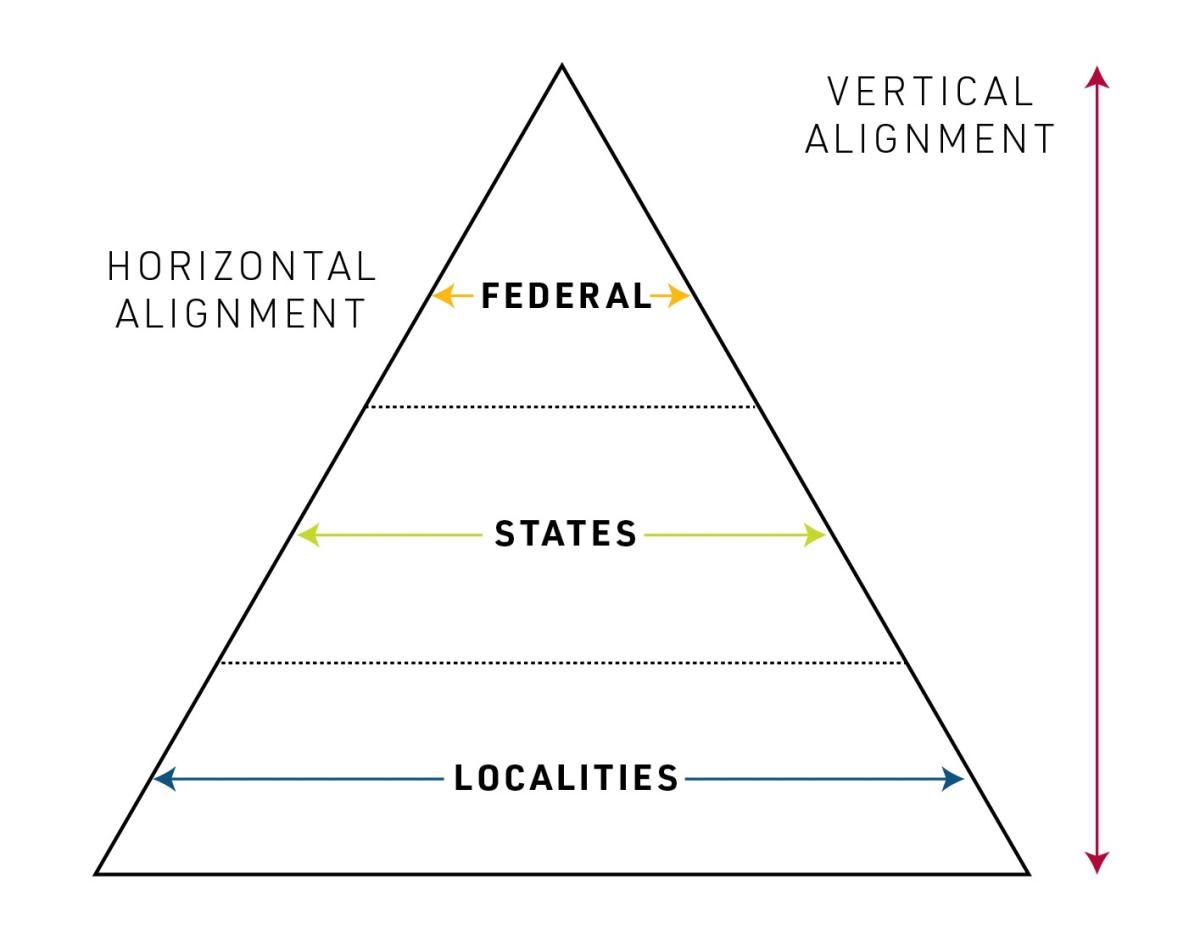This project brings together researchers from the Center for Public Health Law Research and the Indiana University Robert H. McKinney School of Law, to identify a series of 84 actionable steps for government at all levels to improve and align drug policy in the United States.
The increase in serious opioid use disorder (OUD) and overdose deaths in the United States requires a response that coordinates multiple levels of government to mobilize their resources and expertise in an aligned and efficient fashion.

Through the Whole-of-Government (W-G) approach, we gain an improved understanding of the design and implementation of conventional drug policy. The W-G perspective provides both a lens through which to critique current levels of alignment and misalignment between different levels of government or agencies at the same level, and a normative tool designed to structure reforms. What is required for effective policy making is comprehensive, coordinated government action across the different agencies at one level of government (be it federal or state), what we term horizontal W-G, and between different levels (federal, state, tribal, and local), what we term vertical W-G.
Drug Policy Recommendations
The recommendations from this project provide evidence-based guidance to government entities at all levels — federal, state, and local — and within four domains:
- drug policing,
- harm reduction,
- health care and treatment for drug use and addiction,
- social determinants of health.
To use the filtering tools, follow this link to Google Sheets, or explore the full list below
Whole-of-Government for Drug Policy White Papers
A series of six white papers provide further context to the recommendations and outlines the novel whole-of-government approach to drug policy.
- Transforming Traditional Drug Policy Pillars with a Whole-of-Government Approach to Reduce Opioid Use Harms and Deaths
- A “Whole of Government” Approach to Reforming Opioid Use Disorder Legal and Policy Strategies
- Whole-of-Government and Drug Policing
- Whole-of-Government and Opioid Use Disorder Health Care
- Whole of Government and Harm Reduction
- Whole-of-Government, Society and Person
About the Project
This project constructs a much-needed whole-of-government assessment of policy strength and comprehensiveness through practical evidence assessments, policy briefs, and an open-access data portal to promote and monitor progress in developing multi-faceted, effective overdose prevention policy frameworks that address deeper social drivers of health in the United States.
The authors thank their colleagues Sterling Johnson, Jonathan Larsen, Elizabeth Platt, Bethany Saxon, and Hope Holroyd for their substantial contributions to this project.
We also recognize the contributions of the Expert Advisory Committee (EAC), who provided valuable feedback while developing the white paper series over the course of this project. The EAC includes Daniel Blaney-Koen, American Medical Association; Fred Wells Brason, Project Lazarus; Jessica Breslin, ChangeLab Solutions; Nabarun Dasgupta, University of North Carolina at Chapel Hill Injury Prevention Research Center; Corey Davis, Network for Public Health Law; Jeremy Douglas, Housing Works; Taleed El-Sabawi, Florida International University; Tracie Gardner, Legal Action Center; Daliah Heller, Vital Strategies; Kelli Komro, Emory University; Matthew Lawrence, Emory University; Dave Lucas, Center for Court Innovation; Emma (Beth) McGinty, Weill Cornell Medicine; Keli McLoyd, City of Philadelphia; Jennifer Karas Montez, Syracuse University; Kate Nicholson, National Pain Advocacy Center; Anand K. Parekh, Bipartisan Policy Center; and Louise Vincent, Urban Survivors Union.
The authors are grateful for the funding for this project by the Foundation for Opioid Response Efforts (FORE). The views and conclusions in this document are those of the authors and should not be interpreted as representing the official policies or stance, either expressed or implied, of FORE and the EAC.
This work was funded by the Foundation for Opioid Response Efforts (FORE). The views and conclusions contained in this document are those of the authors and should not be interpreted as representing the official policies or stance, either expressed or implied, of FORE. FORE is authorized to reproduce and distribute reprints for Foundation purposes notwithstanding any copyright notation hereon.
